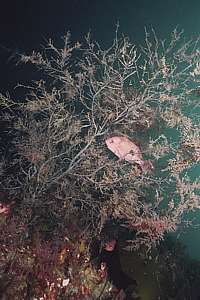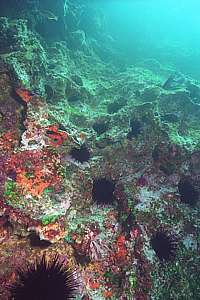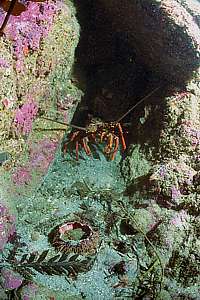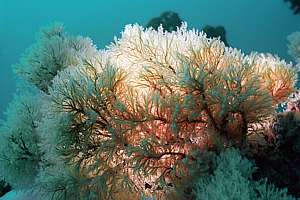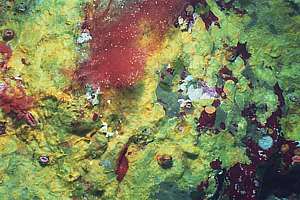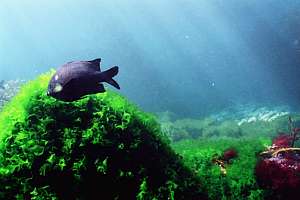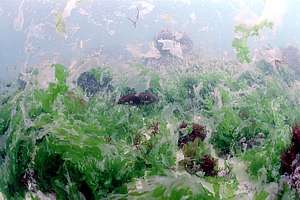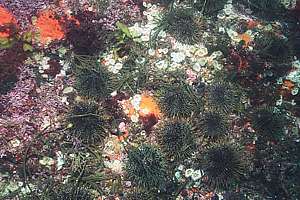 f040635: where seaweed is plentiful, sea urchins live entirely
from storm-cast seaweed, without grazing their patches, as shown here.
With their top tubefeet they grab and hold seaweed that passes by, to be
eaten later.
f040635: where seaweed is plentiful, sea urchins live entirely
from storm-cast seaweed, without grazing their patches, as shown here.
With their top tubefeet they grab and hold seaweed that passes by, to be
eaten later. |
 f040701: the barren zone where urchins live (urchin barren)
is created mainly by storms, but urchins maintain and widen these barrens.
The scruffy seaweed is flexible weed (Carpophyllum flexuosum), ripped
and torn by storms. During prolonged calm periods, this seaweed can grow
tall, above the grazing urchins who cannot chew their tough stems.
f040701: the barren zone where urchins live (urchin barren)
is created mainly by storms, but urchins maintain and widen these barrens.
The scruffy seaweed is flexible weed (Carpophyllum flexuosum), ripped
and torn by storms. During prolonged calm periods, this seaweed can grow
tall, above the grazing urchins who cannot chew their tough stems. |




